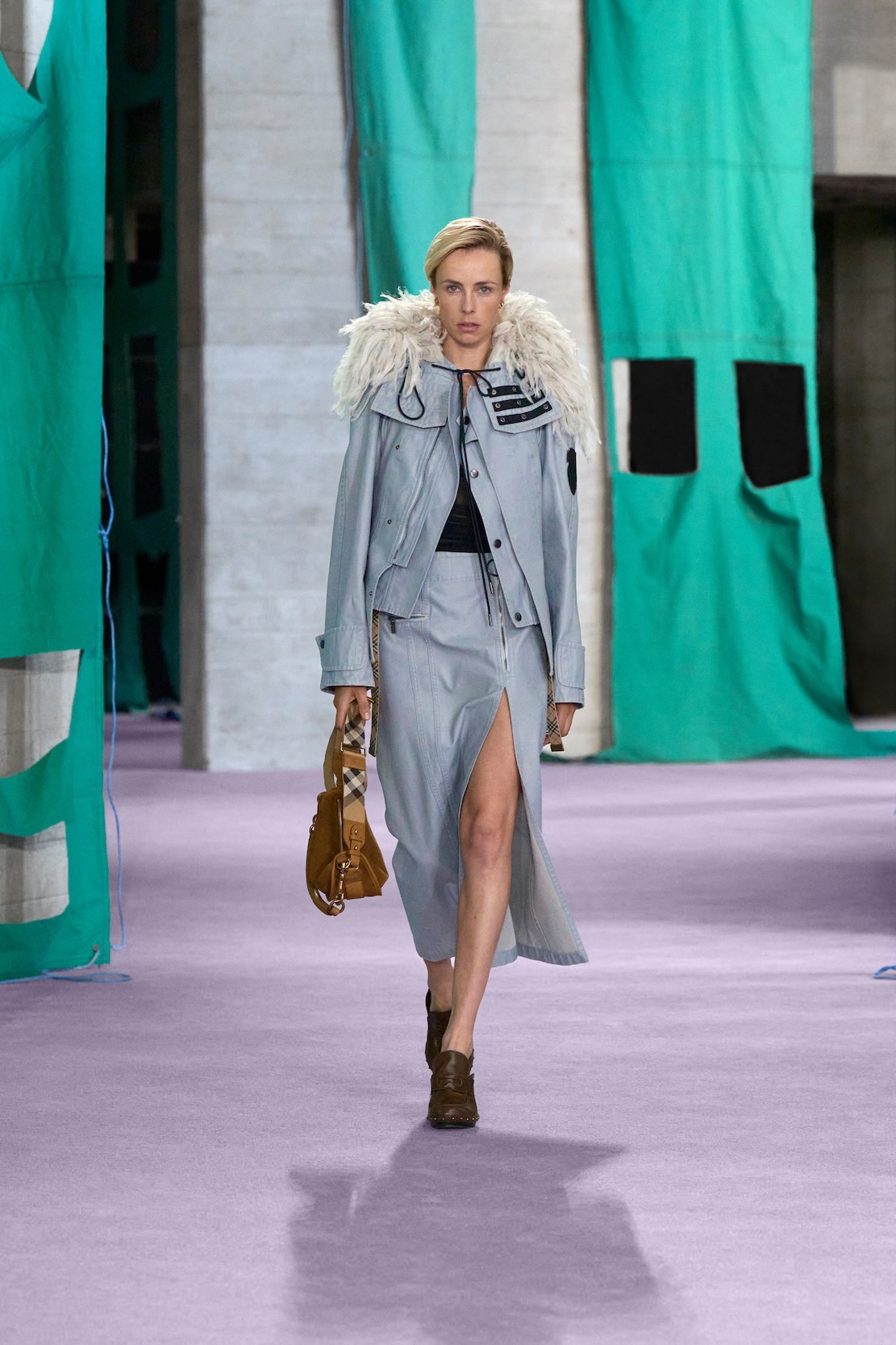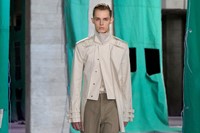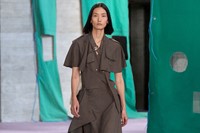What do you think of, when you think of Burberry? For Daniel Lee – as for most of us – the answer is simple, straightforward: the trench coat. Burberry may not actually have invented the garment – its birth in the 19th century as an essential component of officer’s boat uniform is hazy – its etymology obvious comes from the battlefield of the Great War. But the company, under its founder Thomas Burberry, executed it with such authority and refined it through the arena of war in the century’s teens that it became indelibly associated with its name. So Daniel Lee built his entire Spring/Summer 2025 collection around it. “Grounded” was a word he used – and it felt so, the models walking at ground level through the National Theatre without, ironically, any histrionics to distract. Even Gary Hume’s installation, a new work based on his 1990s work ‘Bays’ and comprised of tarpaulin sheets draped with cut-outs, was minimal and spare.
It was a sensible, safe decision. Right now, in a moment of universal discord and uncertainty on every level and through every creative endeavour, everyone wants to be reminded of what everything stands for. In times of strife, culture becomes direct – the Picassos that sell look like Picassos; movies are blockbusters and comfortable, familiar sequels with characters we know and love; and, in fashion, expensive things look rich. This was a rich Burberry collection, in texture and textile, just as its scope was narrowed to focus on a brand icon.
That doesn’t mean we only saw coats. Lee sliced and spliced the Burberry trench, working like a musician to sample his greatest hit. The storm-flap was chopped off to form swaggering waist-length capes, its volume transposed into short jackets with strapped cuffs. The coat itself, executed in silk, was finessed into floating dresses that danced around the body. And the Burberry check was given a thorough workout – that originated in the trenches too, literally as a lining to the coat first used in the 1920s. It was tugged out as a logo-less logo in the 1970s to appeal to newly obnoxious new money, and here became another unmistakable demarcation of brand identity. Oh, and trenches are what you wear when it rains, so the colours seemed sodden, ice blues and raincloud greys and drizzles of sequins like drops of precipitation gleaming.
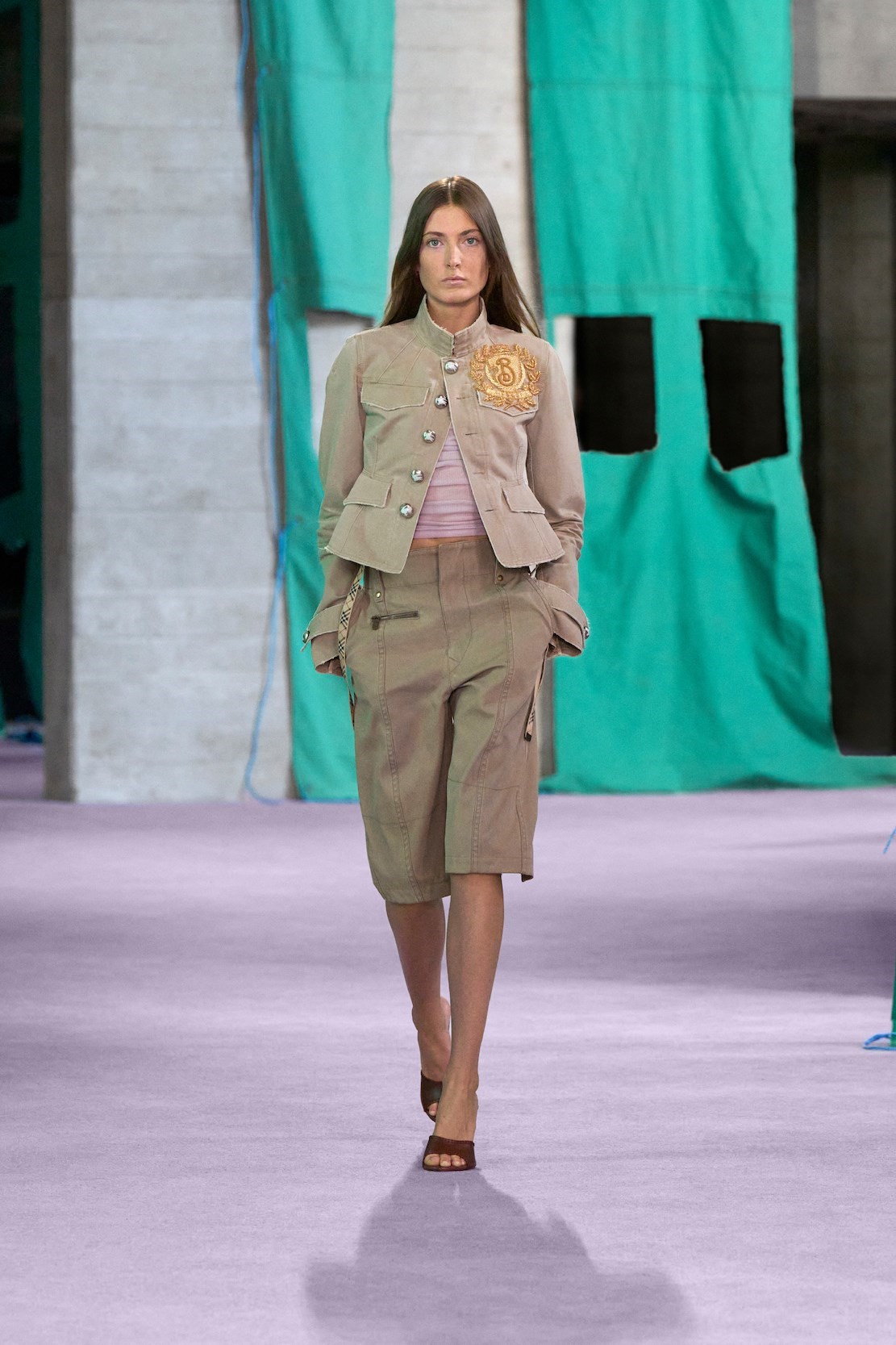
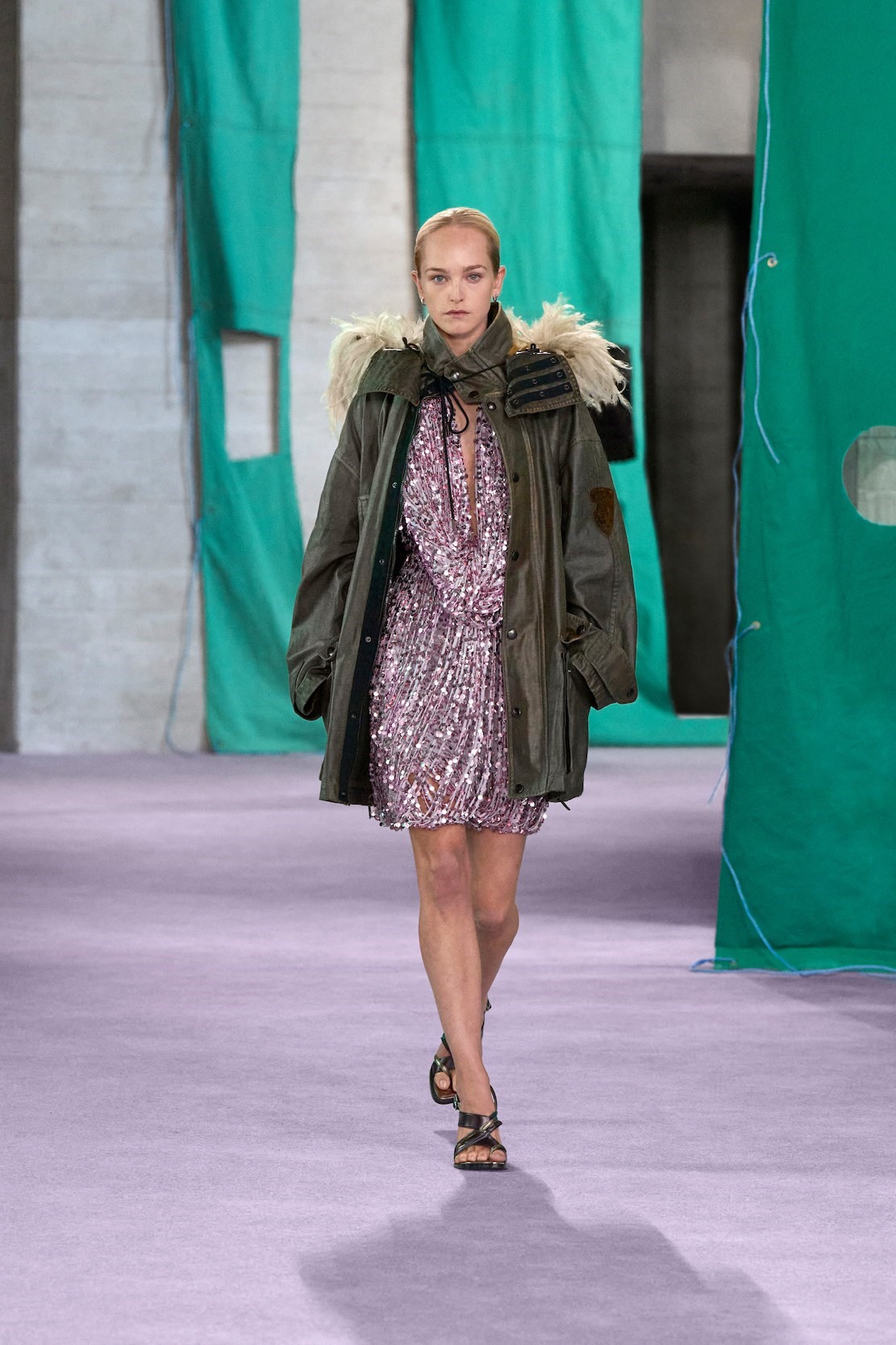
Pragmatism was also key. Burberry, as it was born, was an outfitter – a brand, before that word was in use, that provided clothes people needed, engineered for activities. Now, it was down to the wearers as to whether those activities were trudging through muddy fields, or exploring polar icecaps (people did both in Burbs). But the garments did their jobs, and served purpose from cradle to grave – incidentally, the first multi-function Burberry store, the original one-stop-shop, did wind up with an on-site undertaking service at one point. Lee isn’t dressing extreme sports enthusiasts today – unless you count the fashion industry among that – but his clothes had an earthy, healthy practicality. Slouchy cargo trousers, for him and her, multi-pocketed field jackets, robust shoes and bags. And that Hume installation, somehow, could have represented an urban landscape or rolling green hills behind the models, wombling free.
This was a sturdy effort, one entrenched (excuse the pun) in house values and brand identity. Daniel Lee has used Burberry as a place to roam far and wide, to explore just as Burberry used to dress explorers. But with this collection, he brought it back home.
